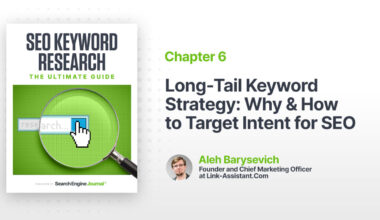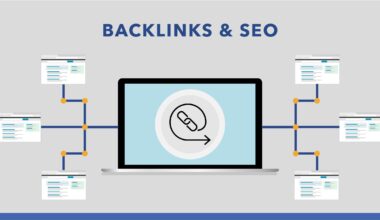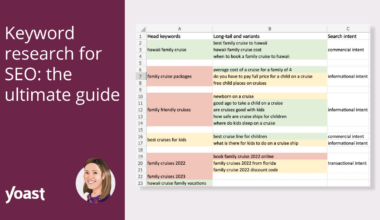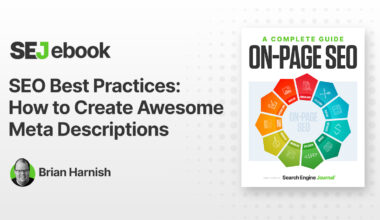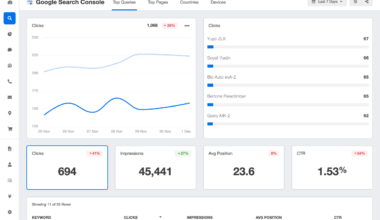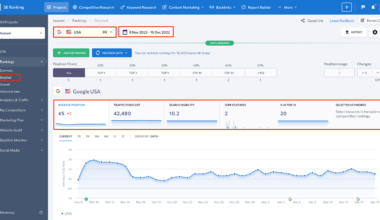Introduction to URL Optimization
When it comes to optimizing your website for search engines, every little detail counts. One important aspect of search engine optimization (SEO) is optimizing your website’s URLs. URLs play a significant role in determining the relevancy and ranking of your website on search engine result pages (SERPs). Therefore, it is crucial to ensure that your URLs are optimized for SEO.
URL optimization involves making your website’s URLs user-friendly, descriptive, and relevant to the content they represent. It helps search engines and users to understand what your website is all about, and what kind of information they can expect to find on each page.
In this section, we will explore the key elements of URL optimization that can help improve your website’s SEO performance. We will discuss the importance of keywords in URLs, URL structure best practices, avoiding duplicate content in URLs, URL length and user experience, and the importance of continuous optimization for better SEO results.
By the end of this article, you will have a better understanding of how to optimize your website’s URLs, and how it can impact your overall SEO strategy. Let’s get started!
Importance of Keywords in URLs
Keywords play a vital role in SEO, and they are equally essential for URL optimization. Including relevant keywords in your website’s URLs can help search engines and users understand your website’s content and relevance to their search queries.
Here are some tips to keep in mind when optimizing your URLs with keywords:
1. Use Descriptive and Relevant Keywords: Include keywords that accurately describe the content of the page. Avoid using generic or irrelevant keywords that do not relate to the page’s content.
2. Use Hyphens to Separate Words: Use hyphens to separate words in the URL. It helps search engines and users to read and understand the URL better. For example, instead of using underscores or spaces, use hyphens such as “example.com/seo-tips” instead of “example.com/seo_tips” or “example.com/seo tips.”
3. Keep URLs Short and Sweet: Shorter URLs are easier to read, share, and remember. Try to keep URLs concise and avoid using unnecessary words or characters. According to Google, the recommended length for URLs is up to 2,083 characters.
4. Avoid Keyword Stuffing: Overusing keywords in the URL is known as keyword stuffing, which can harm your SEO efforts. Use only relevant keywords that accurately describe your page’s content and avoid stuffing keywords in the URL.
5. Use Canonical URLs: Canonical URLs help avoid duplicate content issues and ensure that search engines crawl the right page. Use rel=”canonical” to indicate the preferred version of the URL if you have multiple versions of the same page.
In conclusion, including relevant keywords in your website’s URLs can improve your website’s SEO performance and help users and search engines understand your website’s content. Keep your URLs descriptive, short, and avoid keyword stuffing to achieve better results.
URL Structure Best Practices
URL structure is an essential aspect of optimizing your website for SEO. A well-structured URL provides search engines and users with valuable information about the content of the page and enhances the user experience. Here are some best practices to follow when it comes to URL structure:
1. Use a Logical Hierarchy: Your URL structure should follow a logical hierarchy that reflects the structure of your website. Start with the primary category or topic, followed by subcategories and then the page name. For example, “example.com/cars/tesla/model-s” follows a logical hierarchy of category/subcategory/page.
2. Use Lowercase Letters: Always use lowercase letters in your URLs to avoid confusion and ensure consistency. Search engines are case sensitive, and using uppercase letters can result in duplicate content issues.
3. Avoid Dynamic URLs: Dynamic URLs contain query parameters and can cause duplicate content issues. Use static URLs instead to provide search engines with a clear and concise URL structure.
4. Use Breadcrumbs: Breadcrumbs are a navigational aid that helps users understand their location on the website. Including breadcrumbs in your URL structure can enhance the user experience and improve your website’s SEO.
5. Use SSL Certificates: Using SSL certificates can improve your website’s security and SEO. Websites that use SSL certificates have a “https” protocol in their URLs, which can boost their ranking on search engines.
6. Monitor Broken URLs: Broken URLs can harm your website’s SEO and user experience. Regularly monitor your website for broken URLs and fix them promptly.
In conclusion, a well-structured URL provides valuable information to search engines and users and enhances the user experience. Follow these best practices to optimize your website’s URL structure and improve your SEO performance.
Avoiding Duplicate Content in URLs
Duplicate content is a common issue that many websites face, and it can harm your website’s SEO efforts. Duplicate content occurs when the same content appears on multiple pages or URLs, and it confuses search engines about which page to index and display in search results. Here are some tips to avoid duplicate content in URLs:
1. Use Canonical URLs: Canonical URLs help avoid duplicate content issues and ensure that search engines crawl the right page. Use rel=”canonical” to indicate the preferred version of the URL if you have multiple versions of the same page.
2. Use Parameter Handling: If you have pages with similar content but different parameters, use parameter handling to let search engines know how to handle those pages. You can use rel=”prev” and rel=”next” to indicate pagination, or use the “noindex” tag to prevent search engines from indexing those pages.
3. Avoid Using Session IDs: Session IDs are unique identifiers that websites use to track user sessions. However, they can create duplicate content issues, as each session generates a new URL. Use cookies or other methods to track user sessions instead of session IDs.
4. Use 301 Redirects: If you have multiple URLs or pages with similar content, use 301 redirects to redirect users and search engines to the preferred URL. It helps consolidate page authority and avoid duplicate content issues.
5. Avoid Mirroring Content: Mirroring content is when you copy content from another website and publish it on your website. It can create duplicate content issues and harm your SEO efforts. Create unique and original content for your website instead.
In conclusion, avoiding duplicate content in URLs is essential for your website’s SEO performance. Use canonical URLs, parameter handling, avoid using session IDs, use 301 redirects, and avoid mirroring content to prevent duplicate content issues and improve your website’s SEO.
URL Length and User Experience
URL length is an important factor to consider when optimizing your website’s URLs for SEO. Long and complicated URLs can negatively impact the user experience and make it difficult for search engines to crawl and index your website. Here are some tips to keep in mind when it comes to URL length and user experience:
1. Keep URLs Short: Shorter URLs are easier to read, share, and remember. Try to keep URLs concise and avoid using unnecessary words or characters. According to Google, the recommended length for URLs is up to 2,083 characters.
2. Use Descriptive and Readable URLs: Use descriptive and readable URLs that accurately describe the content of the page. Avoid using generic or irrelevant keywords that do not relate to the page’s content. It’s also important to use words that are easy to read and understand.
3. Use User-Friendly URLs: User-friendly URLs provide a clear and concise indication of the page’s content. Use simple and easy-to-understand words that reflect the user’s search intent. Avoid using complex or technical words that may confuse the user.
4. Avoid Keyword Stuffing: Overusing keywords in the URL is known as keyword stuffing, which can harm your SEO efforts. Use only relevant keywords that accurately describe your page’s content and avoid stuffing keywords in the URL.
5. Consider the User Experience: The user experience should be your top priority when it comes to URL optimization. Ensure that your URLs are easy to read, navigate, and understand. Use breadcrumb navigation to help users understand their location on the website.
6. Test Your URLs: Regularly test your URLs to ensure that they are working correctly and are user-friendly. Use tools like Google Search Console to check for crawl errors and broken links.
In conclusion, URL length and user experience are critical factors to consider when optimizing your website’s URLs for SEO. Keep URLs short, descriptive, and user-friendly, and avoid keyword stuffing to improve your website’s SEO performance and user experience.
Continuous Optimization for Better SEO Results
Optimizing your website’s URLs is not a one-time task; it requires continuous optimization to achieve better SEO results. Here are some tips to help you with continuous optimization:
1. Monitor Your Website’s Performance: Regularly monitor your website’s performance to identify areas for improvement. Use tools like Google Analytics to track your website’s traffic, bounce rate, and user behavior.
2. Update Your Content: Updating your content regularly can improve your website’s SEO performance. Add new content, update outdated content, and remove irrelevant content to keep your website fresh and relevant.
3. Conduct Keyword Research: Conduct keyword research regularly to identify new keywords and search trends. Use these keywords in your website’s URLs and content to improve your website’s relevance and ranking.
4. Keep Up With Algorithm Updates: Search engine algorithms are constantly changing, so it’s essential to keep up with the latest updates and adjust your SEO strategy accordingly.
5. Test and Experiment: Test and experiment with different URL structures, keywords, and content to identify what works best for your website. Use A/B testing and other tools to measure the effectiveness of your optimization efforts.
6. Stay Up-to-Date With Best Practices: SEO best practices are constantly evolving, so it’s essential to stay up-to-date with the latest trends and techniques. Join SEO communities and attend industry events to stay informed.
In conclusion, continuous optimization is critical to achieving better SEO results. Monitor your website’s performance, update your content, conduct keyword research, keep up with algorithm updates, test and experiment, and stay up-to-date with best practices to improve your website’s SEO performance. Remember, optimizing your website’s URLs is just one part of your overall SEO strategy, and it requires continuous effort and attention to achieve better results.















